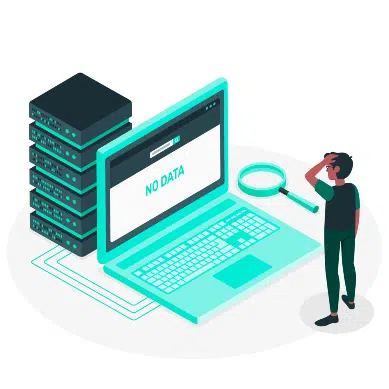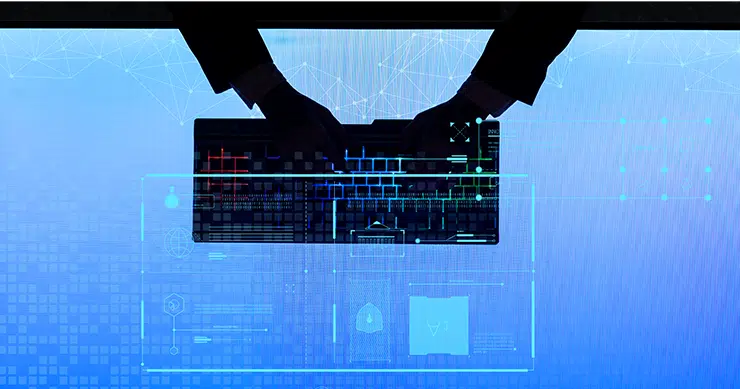Race to the Cloud
Cloud migration is not just a quick shift from traditional network systems to the cloud. It’s more like a marathon. Cloud security compliance, however, is lagging in the race. As cloud-based digital technologies enormously alter the way business is done today, security teams are trying valiantly to keep up with an ever-expanding attack surface. The challenge of cyber-attacks and data breaches in the cloud is a clear and present threat, and anxiety is only heightened by headline-making cloud data breaches like the ones involving Linkedin and Accenture.

Why Traditional Security Methods Won’t Work
Amorphous Perimeters of Cloud Networks
Traditional security measures focused on establishing a strong network perimeter, but strong endpoint protection is not an effective method in today’s enmeshed networks of third-party vendors and cloud-based services. Instead of focusing on the physical components of the network, cloud security must take a logical, data-centered approach. With a data-driven, ontology-based approach it is easier to detect threats and maintain control even when an organization does not physically manage all the network nodes.
The Need for Cloud Compliance
To respond to the expanding digital world, regulations addressing consumer privacy and data security have spawned in recent years. For example, the General Data Protection Regulation (GDPR) was accepted by the European Union and the California Consumer Privacy Act (CCPA) created state-level regulations that organizations must comply with, in addition to other existing federal data privacy regulations. Depending on the industry, compliance with industry-specific laws and regulations may be required. Cloud regulatory compliance means that your systems, processes, and workflows align with the requirements mandated by these regulatory regimes.
Most regulatory frameworks do not specifically address cloud-related security challenges. However, it goes without saying that cloud platforms and services are expected to remain compliant with various international, federal, state, and local security standards. Cloud compliance refers to cloud service providers and users complying with regulatory standards.
Start Getting Value With
Centraleyes for Free
See for yourself how the Centraleyes platform exceeds anything an old GRC
system does and eliminates the need for manual processes and spreadsheets
to give you immediate value and run a full risk assessment in less than 30 days
What are some standard Cloud Compliance Standards?
- Health Insurance Portability and Accountability Act (HIPAA)
- Payment Card Industry Data Security Standard (PCI DSS)
- Gramm-Leach-Bliley Act (GLBA)
- General Data Protection Regulation (GDPR)
- Sarbanes-Oxley (SOX) Act of 2002
- California Consumer Privacy Act (CCPA)
- Service Organization Control 2 (SOC 2)
It may be useful to note here that NIST provides a roadmap for organizations that depicts the ideal methods by which an organization can transform their current enterprise IT to the cloud in NIST SP 500-291 (Version 2).
A Major Obstruction to Cloud Compliance
Shadow IT
Cisco defines shadow IT as the use of IT-related hardware or software by a department or individual without the knowledge of the IT or security group within the organization. Cloud services, software, and hardware being used without the knowledge of the IT department would all be examples of shadow IT. The growth of shadow IT has increased with the consumerization of information technology. People have become comfortable downloading and using apps and services from the cloud to assist them in their work. Even the most meticulous of businesses can’t protect, secure, or configure what they can’t see.
Shadow IT increases the probability that organizations may run afoul of cloud compliance regulations such as PCI-DSS, GDPR, HIPAA, and SOX, exposing them to stiff fines and legal action. Moreover, it can also lead to an increase in the likelihood of data breaches when IT and security operations lose control over the software and applications used in their environment.
Cloud Compliance Tips
In order to mitigate the challenges introduced by cloud compliance in general, and shadow IT specifically, we’ve put together a few guidelines.
Designate Key Players
Whether you already have a cloud service up and running or you’re looking to implement a new one, it’s important to have qualified people in place. Employees with cybersecurity knowledge provide valuable insight and can lead the team to implementing the necessary security controls, with all that it entails.
Research top trusted cloud providers
Familiar and known cloud-based providers are usually reliable and trustworthy. They may also better help you meet cloud compliance requirements. You can even combine services from various cloud providers to find an efficient, cost-effective cloud compliance solution that works for your company.
Ask for Audit Reports
As a cloud user, you are required to comply with relevant data privacy laws. To ensure your potential cloud provider is also in compliance with these laws, it is good practice to initially ask your provider for proof of compliance by providing their compliance audit report.
For example:
- SOC 2 Audit Report
The SOC 2 Type 1 audit report is standardized by the American Institute of Certified Public Accountants (AICPA) and was developed as a guideline for service providers. This report describes whether the provider has implemented the security controls required to comply with the AICPA’s five “trust services criteria”.
- Security
- Availability
- Confidentiality
- Processing integrity
- Privacy
- SOC 2 type 2
The SOC 2 Type 2 report shows the operational effectiveness of these controls beyond the initial implementation. This report attests to the state of implemented controls over a certain period of time.
Understand the shared responsibility model
In a cloud environment, the key to successful security is understanding where a provider’s responsibility ends, and where yours begins. The line is not always black and white, and definitions of the shared responsibility security model even vary between service providers based on the services they provide.
- In the AWS Shared Security Model, AWS claims responsibility for “protecting the hardware, software, networking, and facilities that run AWS Cloud services.”
- Microsoft Azure claims security ownership of “physical hosts, networks, and data centers.”
In the shared responsibility model, cloud providers and businesses have shared responsibility to manage and ensure a safe and secure network environment. Organizations need to use the tools provided by the cloud providers, as well as their own resources, to ensure that they have full visibility and management of their functions, processes, and technologies.
Compliance Management with Centraleyes
For good reason, regulations require that businesses have cloud compliance solutions in place to protect and ensure the availability of business-critical and sensitive data. To that end, organizations need detailed knowledge of all the applications that interface with and offer access to that data.
Centraleyes provides real-time insights into your organization’s internal compliance status, in addition to an unrivaled third and fourth-party cloud service assessment platform. Customizable alerts, meaningful integrations, and automatically updated frameworks will streamline your compliance process.
Book a demo today with our experts.
Start Getting Value With
Centraleyes for Free
See for yourself how the Centraleyes platform exceeds anything an old GRC
system does and eliminates the need for manual processes and spreadsheets
to give you immediate value and run a full risk assessment in less than 30 days





